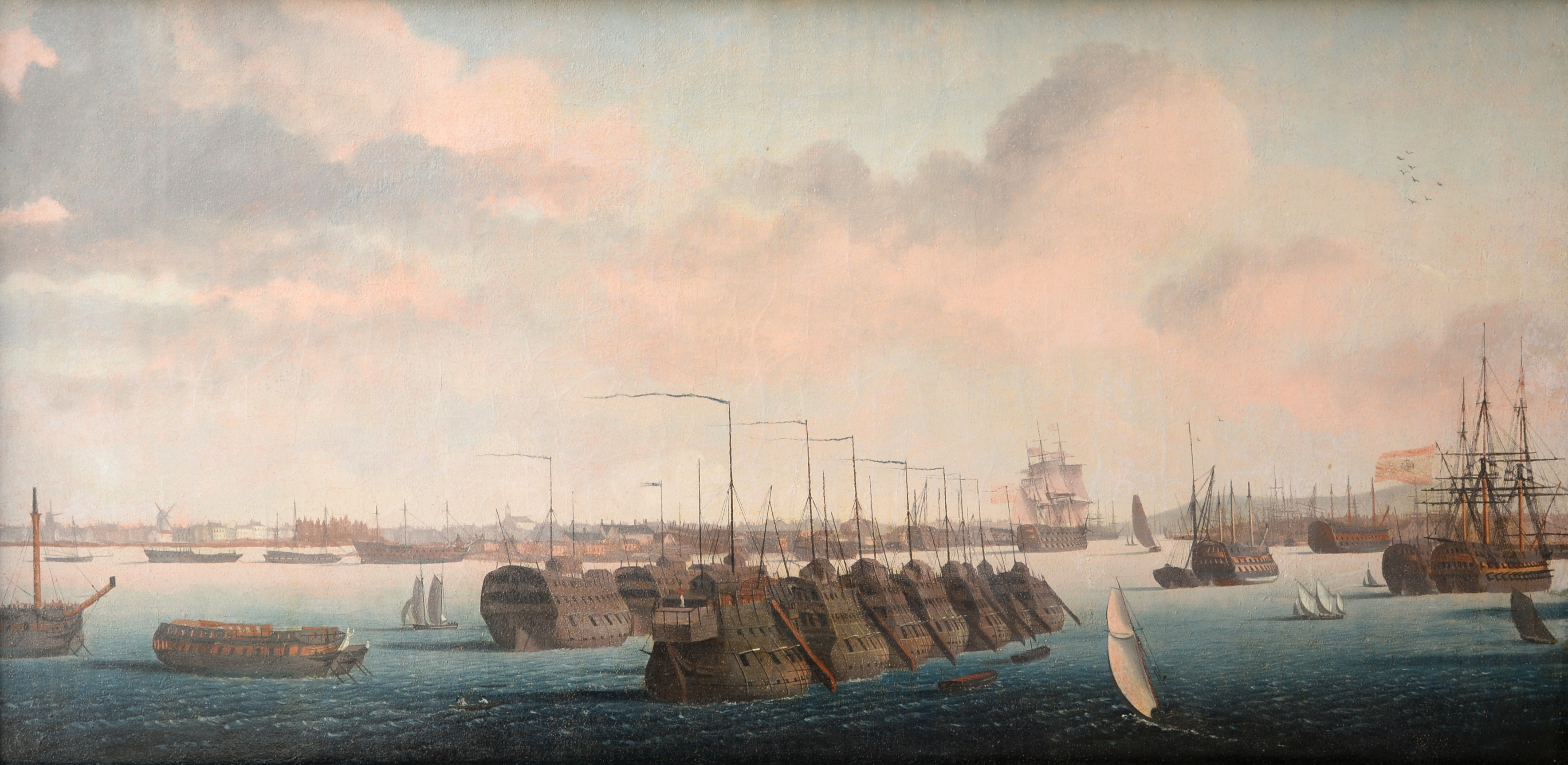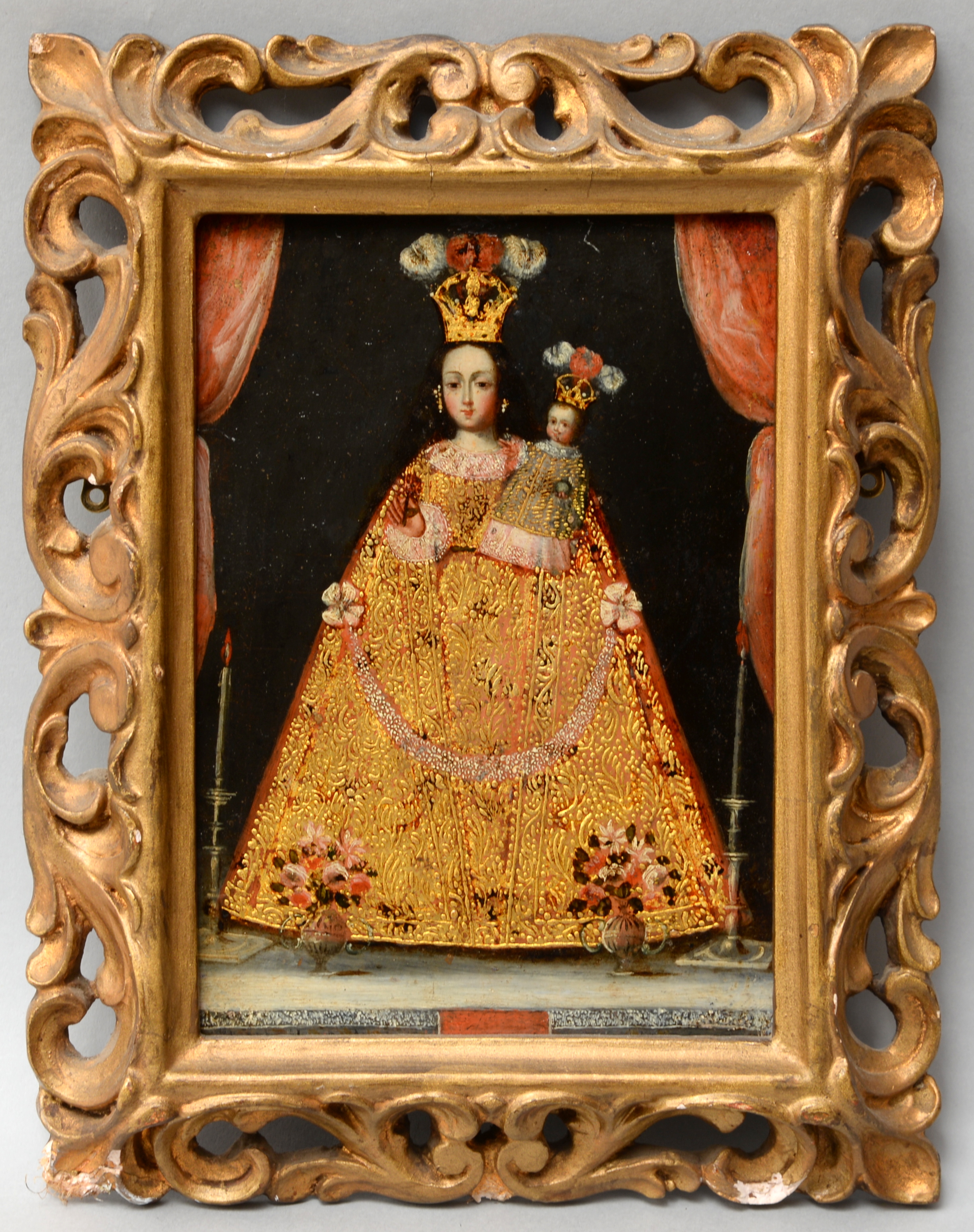Surrey country sale at Ewbank’s
Surrey auction house Ewbank’s is to host a single-owner sale of the contents of Cunningham House, Woodhill, Send the former residence of designer and sculptor Clive Lloyd and his artist wife Annette in September.
Clive Lloyd (1920-2004) began his career as an industrial chemist, served in the Royal Navy throughout World War II, and worked as a designer on returning to civilian life. However, his love for the sea never abated; he was a keen sailor and fisherman, and in the 1960s started to collect marine paintings and research the artists who created them.
Apart from this he had a successful career as a graphic designer and was an artist and sculptor. He travelled extensively, creating stage sets for major motion picture companies such as the Rank Organisation, and in the late 1970s, he was commissioned to redesign the interiors of a number of top South African hospitals.
His early career had led him on to him opening a gallery in Gomshall, Surrey for the sale of fine art; he was a recognised expert on his subjects, sending paintings all over the world to museums and private collectors. A highly gifted man, he was a Fellow of the Royal Society of Arts and Annette was a graduate of the Royal College of Art.
However, it was whilst browsing in London’s Portobello Road Market, that his focus shifted. He found and bought what he thought was an exquisitely carved, tiny ivory boat. He later found it to be bone, not ivory, and made by a French prisoner of war.
 This chance discovery became the first step on a lengthy journey to learn and acquire more examples of prisoner of war work, resulting in the formation of one of the largest private collections of prisoner of war artefacts then in existence. Although most of the collection was sold some years ago; his library, a few Napoleonic prisoner of war items, and an important collection of paintings by Napoleonic prisoner of war Ambroise Louis Garnerary (1783 – 1857) are included in the sale.
This chance discovery became the first step on a lengthy journey to learn and acquire more examples of prisoner of war work, resulting in the formation of one of the largest private collections of prisoner of war artefacts then in existence. Although most of the collection was sold some years ago; his library, a few Napoleonic prisoner of war items, and an important collection of paintings by Napoleonic prisoner of war Ambroise Louis Garnerary (1783 – 1857) are included in the sale.
During his 30-year quest to find out more about this neglected field of history, Lloyd wrote two well-respected books on the subject, set against an historical background dating from the Seven Years’ War (1756-63) to Napoleon’s downfall in 1816. They document the arts, crafts and occupations of the prisoners of war in England, France and America from 1756 to 1816, providing the historical background to and detailed examination of a neglected area of warfare. They also illustrate the incredible skills possessed by the makers of these remarkable ‘works of art’.
There are eight paintings by Ambroise Louis Garnerary (1783 – 1857) in the sale on September 26. Garnerary was a French corsair, painter and writer, who served under Robert Surcouf and Jean-Marie Duterte, and was held prisoner by the British for eight years.
He was captured on the French vessel ‘Belle Poule’ in 1806, and not being given the privilege of parole, was sent to the prison hulk ‘Prothee’ in Portsmouth Harbour. From 1812 he was allowed to live ashore in a parole area from which he painted a series of views of prison hulks and shipping in Portsmouth Harbour, before being released in 1814. On returning to France, Garneray had a successful career as a marine artist and became director of the Museum of Fine Arts in Rouen in 1833.
Relatively few Garnerary paintings are known to exist and this is believed to be the largest single collection in the World of his Napoleonic prisoner of War themed paintings. For the last 40 years or so Lloyd sought out and bought any that he could find and many of them are illustrated in his books.
An oil-on-canvas depicting prison hulks lying in Portsmouth Harbour, has a sale estimate of £3,000 and £5,000. It is large measuring 53cm by 107cm, and has a plaque showing the artist’s name as ‘Hoppey Turner’. This was believed to be the way in which the British officer who dealt with, and made money from, Garneray’s works, kept secret their source, as described in Lloyd’s book ‘A History of Napoleonic and American Prisoners of War 1756-1816 – Hulk, Depot and Parole’.
Similar views of Portsmouth Harbour by Garneray can be found in the National Library of Australia, Canberra, and a further three in the National Maritime Museum, Greenwich, London.
 Another Garnerary panorama of Portsmouth Harbour with prison hulks in line ahead and warships at anchor, including American and Spanish warships, also carries an estimate of between £3,000 and £5,000. It is in oil-on-canvas, measures 51cm by 102cm, and was purchased from Christie’s in 2003.
Another Garnerary panorama of Portsmouth Harbour with prison hulks in line ahead and warships at anchor, including American and Spanish warships, also carries an estimate of between £3,000 and £5,000. It is in oil-on-canvas, measures 51cm by 102cm, and was purchased from Christie’s in 2003.
Other paintings of note within the collection at Cunningham House, include a small oil-on-board (7cm by 10cm) of ships in harbour by Canadian Impressionist painter James Wilson Morrice (1865 – 1924), it carries an estimate of between £2,000 and £3,000. Morrice spent much of his life in France, and his work had a lasting effect on the generation of Canadian artists who followed him.
An oil-on-canvas by Bernard De Hoog (1866-1943), entitled ‘Maternal Duties’ has been valued at between £1,500 and £2,500. It is signed B. De Hoog, and measures 53cm by 46cm. It depicts a mother spoon-feeding her baby.

 A portrait of an Elizabethan lady with pearl earrings, necklace and white lace collar from the English school, in a gilt and decorated frame, (54.5cm by 40cm) carries an estimate of between £1,500 and £2,500.
A portrait of an Elizabethan lady with pearl earrings, necklace and white lace collar from the English school, in a gilt and decorated frame, (54.5cm by 40cm) carries an estimate of between £1,500 and £2,500.
Another oil, this time on copper, from the Spanish School in the late 17th century of Madonna and Child in elaborate costume and headdress is valued at between £800 and £1,200. It measures 17cm by 12cm.
A small selection of French P.O.W artefacts is available in the sale, including a rare Napoleonic masonic apron, which belonged to Louis Duchemin, which he wore at the P.O.W. lodge ‘Le Paix Desiree’ at Wincanton. The apron measures 26cm x 38cm, and is illustrated in ‘French Prisoners’ Lodges’ by J. T. Thorp; it comes with a French Prisoner of War Lodge certificate for Louis Duchemin on becoming a Master of ‘Le Paix Desiree’ lodge with red wax seal in metal box, and a marriage certificate dated 4 February 1808, for Louis Duchemin and Elizabeth Clewett whose father was the Wincanton Masons’ printer. This lot is valued at between £800 and £1,200.
 Among Lloyd’s collection are a selection of bronzes. One by Antoine-Louis Barye, of a tiger, is estimated at between £1,000 and £1,500. It stands on a rectangular base, is 42cm long and is signed.
Among Lloyd’s collection are a selection of bronzes. One by Antoine-Louis Barye, of a tiger, is estimated at between £1,000 and £1,500. It stands on a rectangular base, is 42cm long and is signed.
 Another, is a cast bronze figure of a horse with a small dog at its feet, signed and marked P. Barbedienne Fondeur, who was a French metalworker and manufacturer, who was also well-known as a bronze founder. The figure was sculpted by Pierre-Jules Mêne (1810 – 1879), a leading French sculptor and one of the pioneers of animal sculpture in the 19th century. It measures 45cm by 65cm, and has been valued at between £2,500 and £3,500.
Another, is a cast bronze figure of a horse with a small dog at its feet, signed and marked P. Barbedienne Fondeur, who was a French metalworker and manufacturer, who was also well-known as a bronze founder. The figure was sculpted by Pierre-Jules Mêne (1810 – 1879), a leading French sculptor and one of the pioneers of animal sculpture in the 19th century. It measures 45cm by 65cm, and has been valued at between £2,500 and £3,500.
A 19th century terracotta model of a cockerel in coloured glazes by French sculptor Paul Comolera, for the Choisy-le-Roi faience factory, is 61 cms high and carries an estimate of between £800 and £1,200.
Many furniture lots are for sale, including a Regency rosewood breakfront bookcase with carved decoration and brass galleried top. It measures 163cm high, 200cm wide,and 38cm deep and has been valued at £1,500-2,500, by the team at Ewbank’s. Also in the sale is a 19th century continental light flame mahogany and ebonised collector’s cabinet estimated at £400 to £600.
An early 20th century Polyphon, an early disc player, in a walnut-veneered glass-fronted case with discs and open disc compartment below, carries an estimate of between £500 and £800. It stands on bun feet, and measures 145cm x 50cm x 32cm
Clive Lloyd’s research library is included in the auction. One of the most valuable lots is one featuring 23 volumes of ‘The Naval Chronicle’, by J.S. Clarke and others, published by Bunney & Gold, London in the early 19th century. It includes a paste-in book plate of a former owner, and is bound in half-leather and marbled boards. The lot is valued at between £300 and £500.
The sale comprises 300 lots and is to be held at Ewbank’s Burnt Common Saleroom less than 200 yards away from the house.
